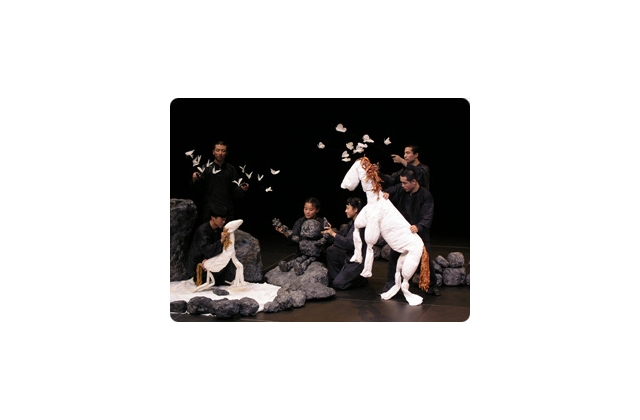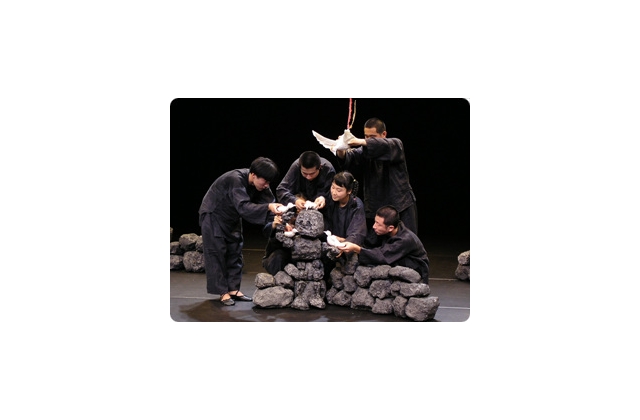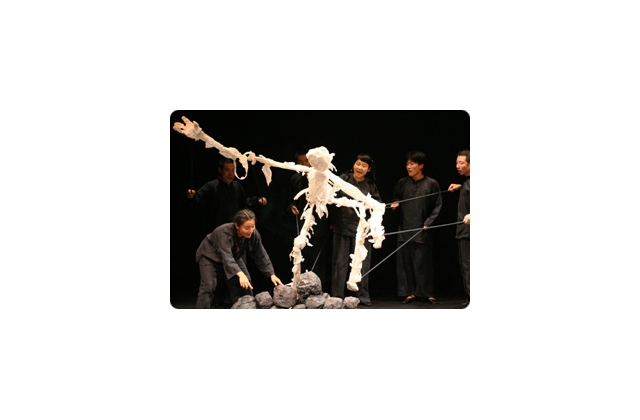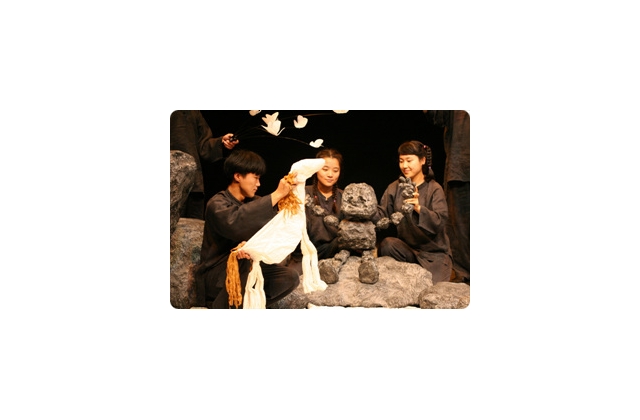Performance with Sand Animation, Puppets, Objet
The story of Jeju Island’s rocks, that have stored historical painful memories, difficulties and the Joy of life with us!
The Introduction
portrays the unique spirit of Jeju island. They even chose the main character’s name ‘Muami’ from the characteristic rock in Jeju, called ‘Hyun Mu Am’ (Basalt). They adapted the Jeju dialect to lyrics of songs used for their performance, showing us beautiful scenery of Jeju and playful, innocent Jeju kids’ games. This performance was newly attempted with all different kinds of stage methods including Korean paper Objet, Mime and Sand animation. The part of Sand animation is especially rare and experimental in the Korean performance field. It will be performed impromptu through an image. has been performed in Incheon city and Seoul city for long runs with public favor because of the experimental composition. This performance will be very enjoyable for preschoolers and even adults to watch it together.
The Composition
This is the story of ‘Muami’, who was born out of a rock in Jeju Island and met many animals, discovered nature, and experienced a great adventure.
#story 1/ Prologue
#story 2/ Children of the Island
#story 3/ Sand Animation
#story 4/ The Birth of Muami
#story 5/ Sand Animation
#story 6/ Songs with Jeju dialect
The specialty
1. Puppets: Jeju “Hyunmuam’ (Basalt) reappears as a human-like puppet who plays ‘Muami’. Two operators move the puppet’s hands and legs and express the movements and emotion like a living child with unique operational skill.
2. Movement: It is divided by body gesture and action without script (called Mime) and partial stop motion. It will deliver great images to audiences.
3. Sand Animation (Sand Art): This is the screen work using sand. It was the invitation performance of ‘Chun Cheon Mime Festival’, ‘Korean Experimental Art Festival’. The sand animation artist does his work with sand, connected with a big screen. Audiences will enjoy the artist’s impromptu art.
4. Improvisation: During the performance, a performer will play the Piano, Synthesizer and Wind bells in the corner of the stage. They will present harmonic sound to us with other performers extemporaneously.
Press
“ tells us a different side story on Jeju Island through the rocks that can laugh and play like little innocent children. It keeps the spirit of Terror J. (Young experimental art group in Jeju Island) inside.” -Halla Daily News
This is the story about Jeju Island’s rocks which are revitalized by people who try to break the old image of Jeju (Sam Da- there are 3 things in Jeju in too much abundance: Women, Rocks and wind) and to create new and fresh impressions combined with artistic work. -Jeju Times














